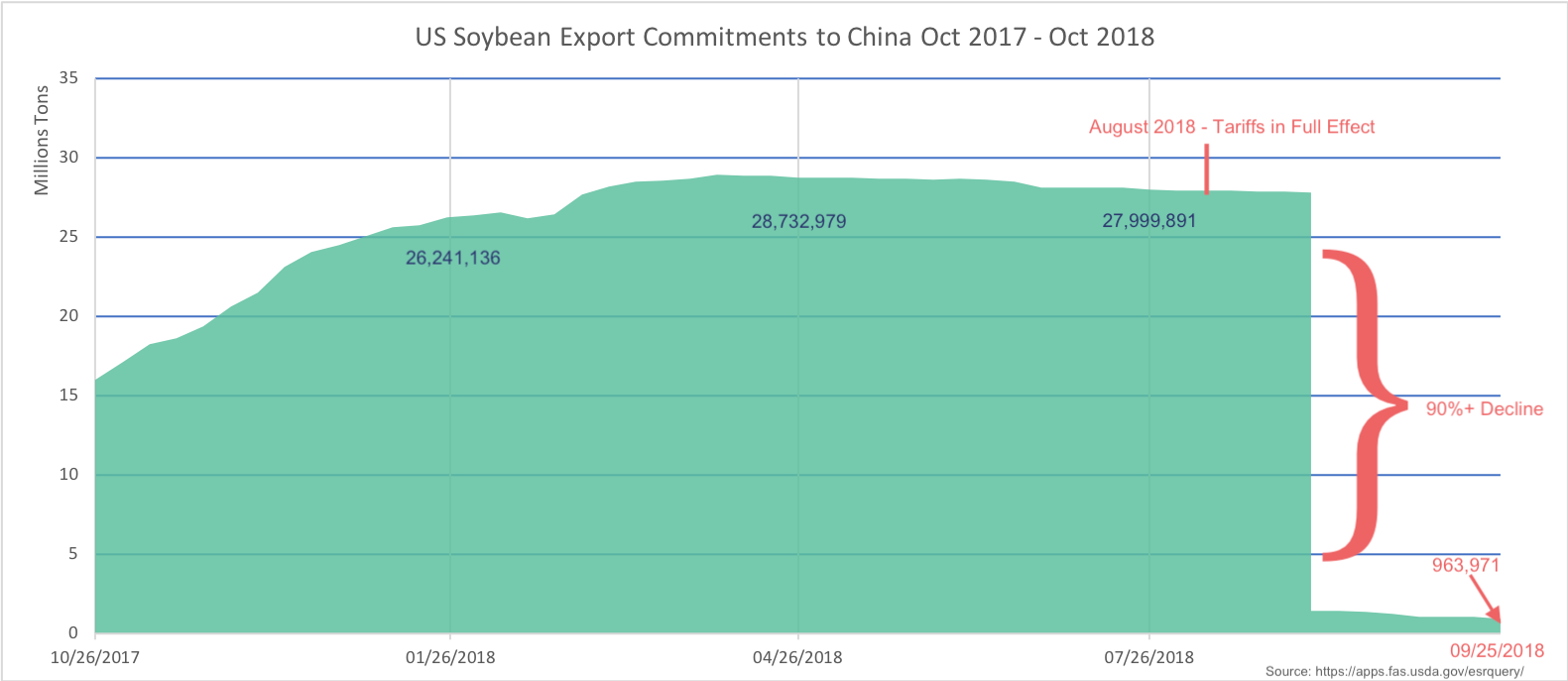Politics of a Trade War [Updated Nov 6 2018]
While most economic professionals believe that a Trade War would be damaging to the world and the US economy, the reality is that the trade war implications will not be evenly distributed across all sectors and industries in the US.
When the trade war was announced, the desired outcome was to help a number of sectors in the United States that are declining - primarily manufacturing, with a focus on industries within that sector that create industrial parts and some types of electronics. Manufacturing is still a massive part of the US economy, reaching an all time high in 2018[1]. However, manufacturing jobs have been on a decline since the 90s, and the recovery from the 2008 great recession has been a “jobless recovery” where manufacturing output has increased, but jobs have not increased along with the output. [2]
This is caused by an increase in automation within the manufacturing sector that are driven by capital improvements as opposed to more hiring.
However, trade war retaliation via increased tariffs, primarily from China, has limited the positive impact of the new trade policy and has put Donald Trump in a precarious position. The retaliatory tariffs may impact his base the most, and may cause a backlash across his supporters. [3]
Initial polling shows that his support is holding strong, but many expect that the most impacted population (soybean farmers) will hold strong for Trump until harvest season, when they feel the economic impact of the Chinese tariffs.
Proof Factor has put together an infographic detailing who is expected to be hurt the most from the trade war across the country.
Update Nov 6 2018: As expected, Soybean exports to China are down significantly, 94% this year. Some of the delcline has been buoyed by increased exports to other countries, but it has not been even and the prices have declined dramatically. The New York Times Reports: "During the first six weeks of the current export year, which began in September, American soybean exports to China are down by about six million tons from last year, while soybean exports to the rest of the world are up by only three million tons." [4] Updated Graphic Below:


[1] https://fred.stlouisfed.org/graph/?graph_id=376822&rn=2597
[2] https://www.economist.com/briefing/2017/01/14/politicians-cannot-bring-back-old-fashioned-factory-jobs
[3] http://www.spokesman.com/stories/2018/jul/15/farmers-fear-trade-war-will-most-hurt-but-theyre-n/
[4] https://www.nytimes.com/2018/11/05/business/soybeans-farmers-trade-war.html